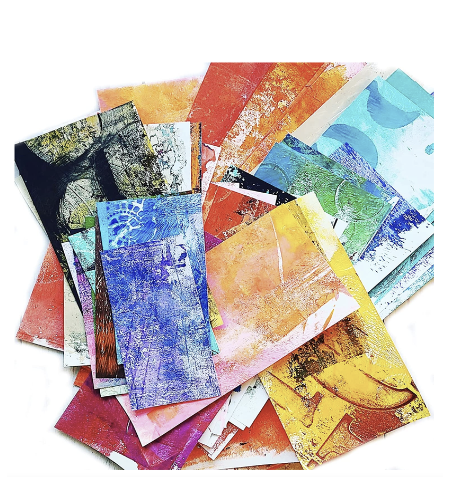 Image 1 of 7
Image 1 of 7

 Image 2 of 7
Image 2 of 7

 Image 3 of 7
Image 3 of 7

 Image 4 of 7
Image 4 of 7

 Image 5 of 7
Image 5 of 7

 Image 6 of 7
Image 6 of 7

 Image 7 of 7
Image 7 of 7








The Snowy Day - Beyond the Book Resources
When it was first published in 1962, The Snowy Day was considered groundbreaking. Keats was intentional about making the main character an African American child. The author had grown up in New York City, living among neighbors from a range of ethnic backgrounds. As an adult, he'd observed that none of these people of color appeared in children’s books that were being published at that time. Also missing were stories set in urban settings.
Keats also received push back for assuming to understand a Black child when he himself was white. Many believed Keats to be a Black man and were disappointed or shocked to learn that he was white. When ask why his protagonist was a Black child, Keats answered, " I put Black characters my books because they were there. They are inspired by the neighbors and friends I grew up with in Brooklyn. They'd always been there but were never represented in children's literature.
Click HERE for a child-friendly bio of Keats.
Themes: Urban Life Making Memories
Awards : Caldecott Medal 1963
Teachable Moments:
This book offers multiple opportunities for learning that go far beyond what's printed on the page or seen in the illustrations. Here's a small sample:
Character Traits - How would you describe Peter to someone that hasn't read the book?
Art - Keats created the illustrations for this book using paint and collage methods.
Onomatopoeia- This is the term for words that are what they sound like. Here are a few examples from the story: crunch, plop, & smack
Science- Why did Peter's snowball melt?
Examples Shown with Images are for Reference Only - Not Part of the Download
When it was first published in 1962, The Snowy Day was considered groundbreaking. Keats was intentional about making the main character an African American child. The author had grown up in New York City, living among neighbors from a range of ethnic backgrounds. As an adult, he'd observed that none of these people of color appeared in children’s books that were being published at that time. Also missing were stories set in urban settings.
Keats also received push back for assuming to understand a Black child when he himself was white. Many believed Keats to be a Black man and were disappointed or shocked to learn that he was white. When ask why his protagonist was a Black child, Keats answered, " I put Black characters my books because they were there. They are inspired by the neighbors and friends I grew up with in Brooklyn. They'd always been there but were never represented in children's literature.
Click HERE for a child-friendly bio of Keats.
Themes: Urban Life Making Memories
Awards : Caldecott Medal 1963
Teachable Moments:
This book offers multiple opportunities for learning that go far beyond what's printed on the page or seen in the illustrations. Here's a small sample:
Character Traits - How would you describe Peter to someone that hasn't read the book?
Art - Keats created the illustrations for this book using paint and collage methods.
Onomatopoeia- This is the term for words that are what they sound like. Here are a few examples from the story: crunch, plop, & smack
Science- Why did Peter's snowball melt?
Examples Shown with Images are for Reference Only - Not Part of the Download
When it was first published in 1962, The Snowy Day was considered groundbreaking. Keats was intentional about making the main character an African American child. The author had grown up in New York City, living among neighbors from a range of ethnic backgrounds. As an adult, he'd observed that none of these people of color appeared in children’s books that were being published at that time. Also missing were stories set in urban settings.
Keats also received push back for assuming to understand a Black child when he himself was white. Many believed Keats to be a Black man and were disappointed or shocked to learn that he was white. When ask why his protagonist was a Black child, Keats answered, " I put Black characters my books because they were there. They are inspired by the neighbors and friends I grew up with in Brooklyn. They'd always been there but were never represented in children's literature.
Click HERE for a child-friendly bio of Keats.
Themes: Urban Life Making Memories
Awards : Caldecott Medal 1963
Teachable Moments:
This book offers multiple opportunities for learning that go far beyond what's printed on the page or seen in the illustrations. Here's a small sample:
Character Traits - How would you describe Peter to someone that hasn't read the book?
Art - Keats created the illustrations for this book using paint and collage methods.
Onomatopoeia- This is the term for words that are what they sound like. Here are a few examples from the story: crunch, plop, & smack
Science- Why did Peter's snowball melt?
Examples Shown with Images are for Reference Only - Not Part of the Download
Extend the Learning with Story-Based Play
Adding an element of play is another way to deepen your child’s understanding of concepts within and beyond a story. According to Hall (1991), young children often develop advanced literacy skills when they engage in play related to a familiar story. Many complex literacy skills develop naturally when the story and play intersect, setting the stage for your child to learn to read and write.
It’s easy. Take a great story, gather toys that align with that story, and get out of the way. Your child will do the rest. The goal is to allow the play to evolve naturally. You’ll be surprised by the amount of learning transferred and reinforced through this type of play.
Here’s Why We Love These Specific Products:
They have direct connections to the book.
They reinforce new vocabulary.
They encourage imaginative play
They make it easy to re-enact parts of the story.
They often take learning beyond the confines of the story.
Few require batteries, screens, or electricity.
If you purchase something through one of our links, you won't pay a penny more, but we’ll earn a tiny commission which helps keep the lights on.







